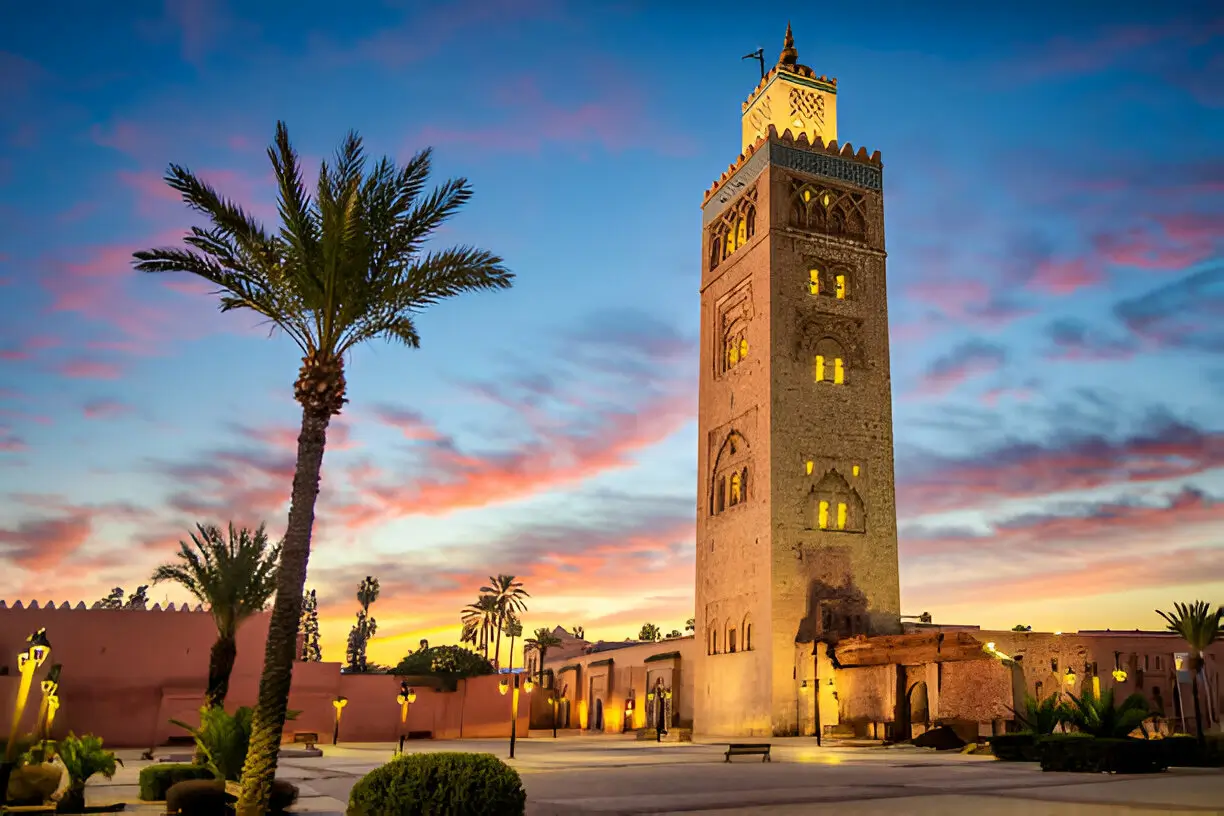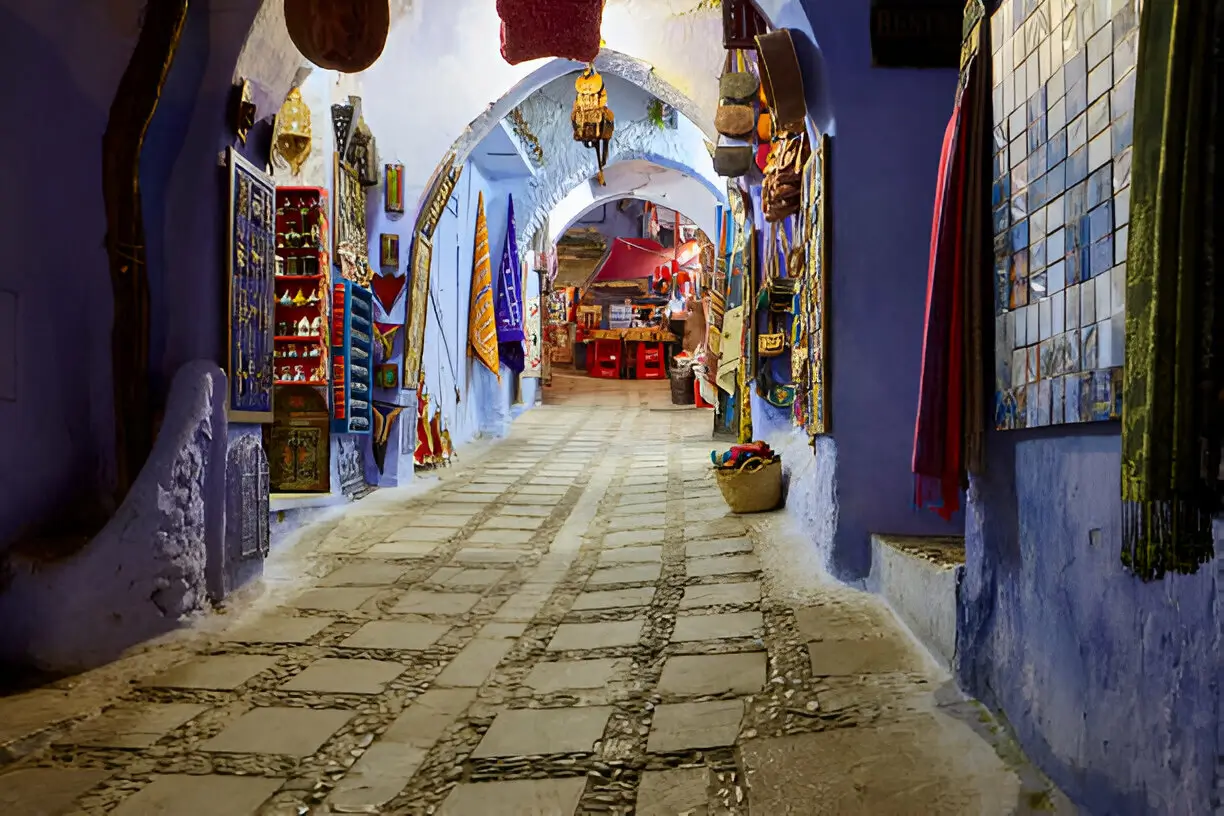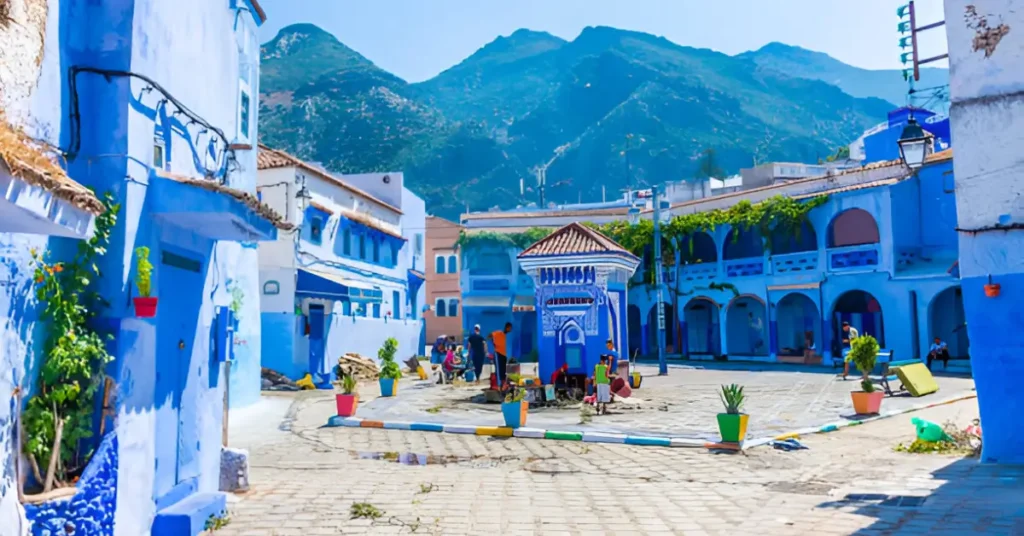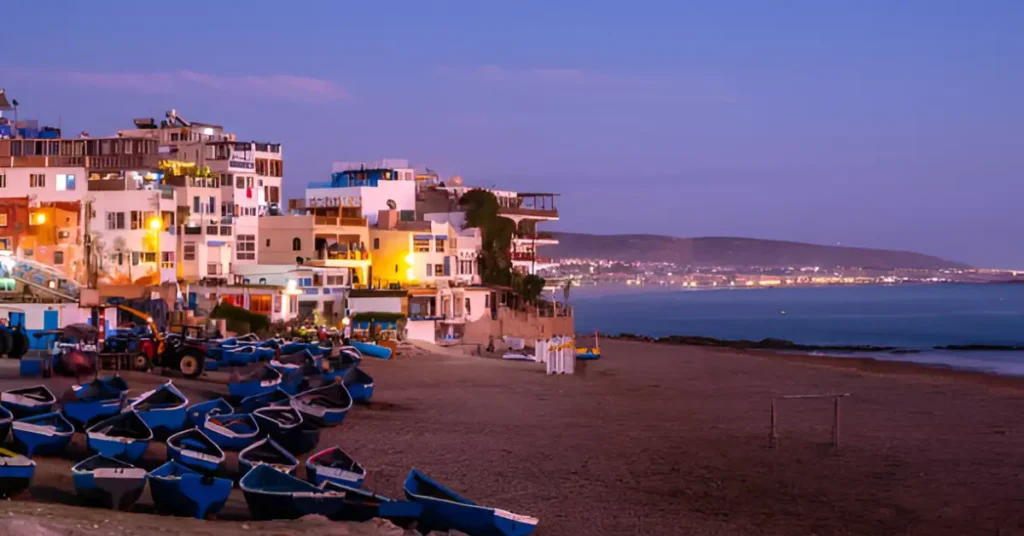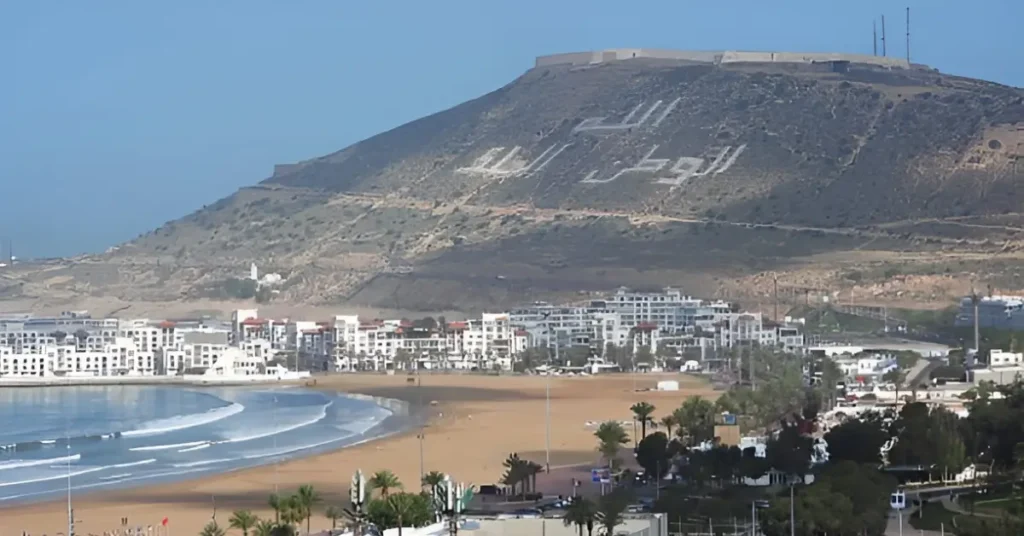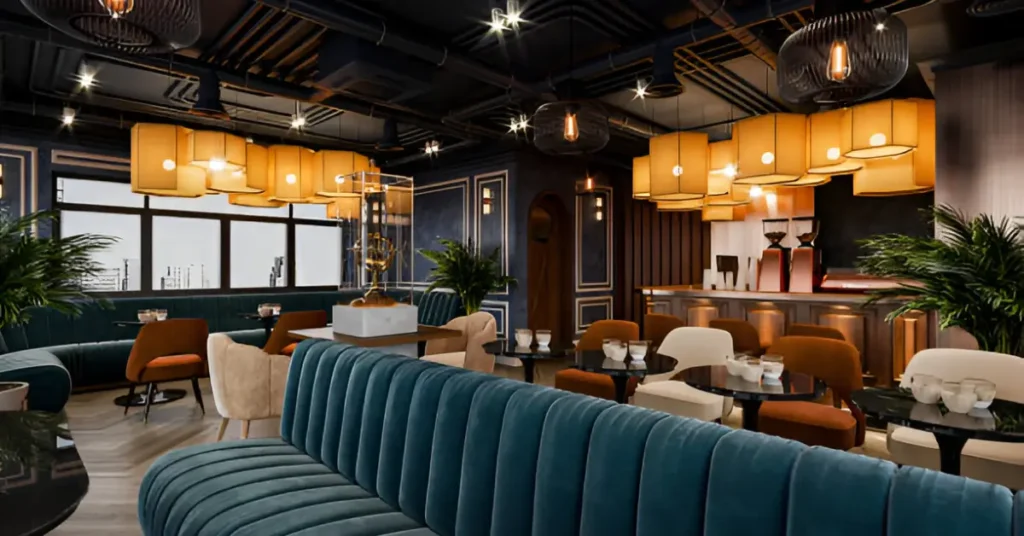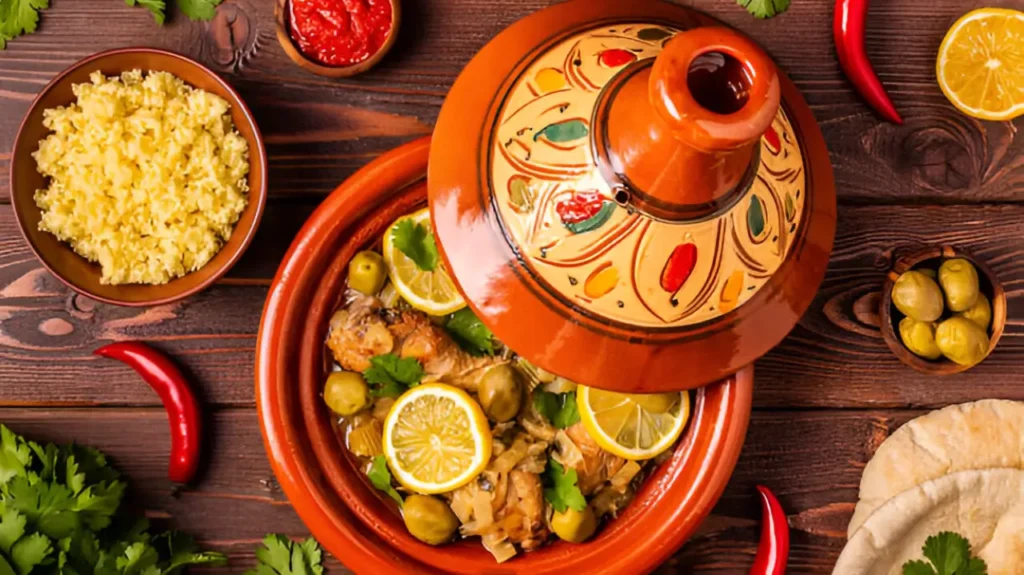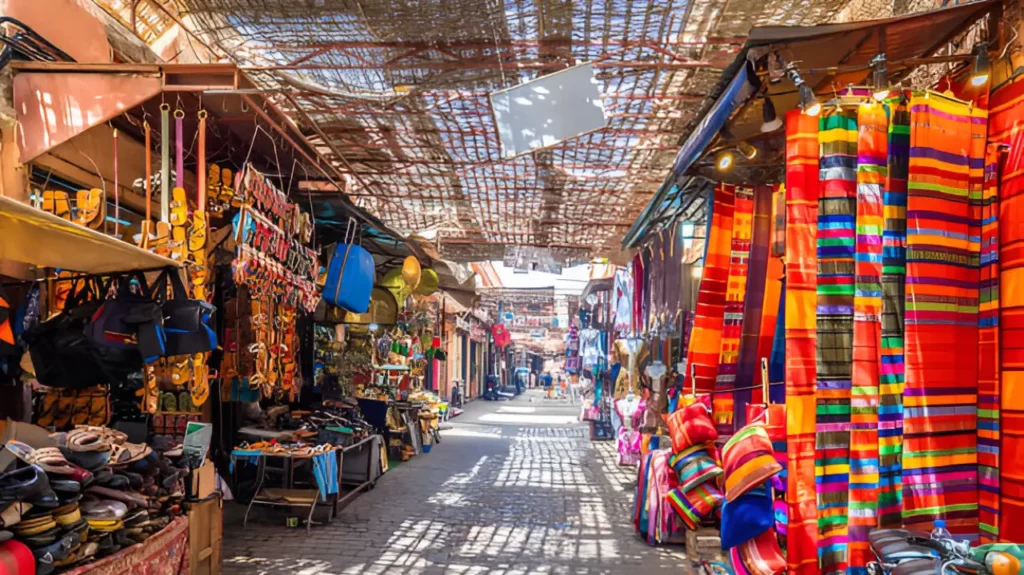marrakesh
Plan Your Trip
Marrakesh is a historic city located in western Morocco, near the base of the Atlas Mountains. Often called the “Red City” due to its terracotta-colored walls and buildings, it was founded in 1070 and has grown into one of the country’s most important cultural and economic centers. Marrakesh is a vibrant blend of ancient traditions and modern charm, attracting millions of visitors each year with its bustling souks, historical landmarks, and colorful atmosphere.
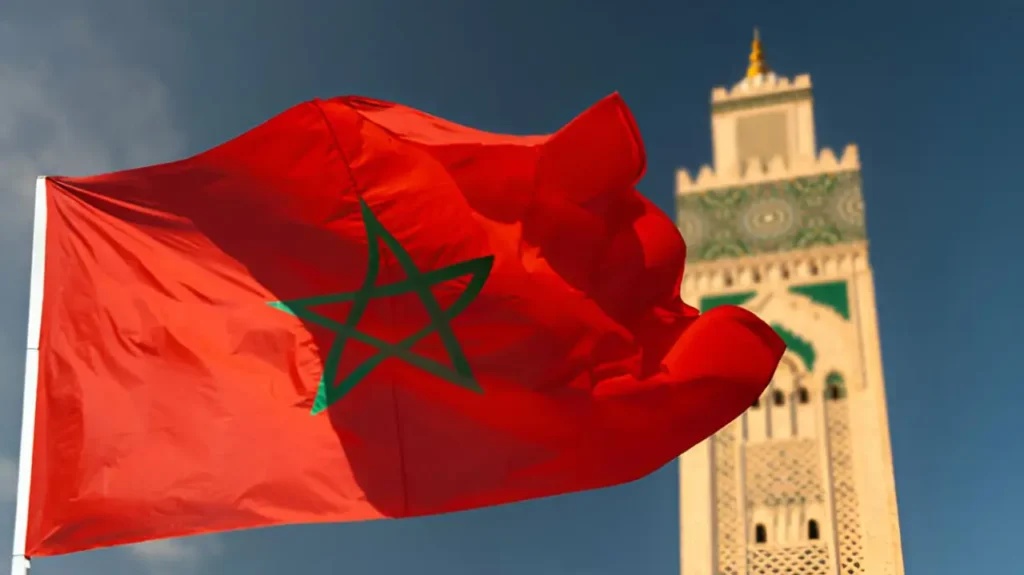
Highlights
Marrakesh is a city bursting with life, color, and culture. At the heart of the city is Jemaa el-Fna, the legendary square that comes alive day and night with street performers, local food stalls, musicians, and storytellers. The square is a sensory overload and a true symbol of Marrakesh’s vibrant atmosphere. Just a few steps away lies the Koutoubia Mosque, an iconic 12th-century structure that dominates the skyline with its towering minaret, a perfect example of Moroccan-Andalusian architecture.
Wandering through the medina, visitors can explore a maze of narrow streets filled with bustling souks selling spices, textiles, traditional lamps, leather goods, and handmade crafts. Each corner reveals something unique whether it’s a hidden riad, a quiet courtyard, or a colorful shop. Key historical landmarks like the Bahia Palace, with its intricate mosaics and gardens, and the Saadian Tombs, resting place of royal family members, offer a glimpse into Morocco’s rich past.
For a more peaceful experience, travelers can escape to the Majorelle Garden, a beautifully designed botanical oasis painted in vivid blues and greens. The garden offers a quiet contrast to the lively medina, making it a favorite among tourists and photographers. Marrakesh is also home to unique cultural experiences like hammams, cooking classes, and traditional music, making it an unforgettable destination that blends history, art, and Moroccan hospitality.
Included & Excluded
A typical tour package to Marrakesh often includes essentials designed to provide a seamless and immersive experience. Common inclusions are accommodation in traditional riads or hotels, guided city tours covering landmarks like the Medina, Bahia Palace, and Jemaa el-Fna, and sometimes meals, especially breakfasts. Many packages also feature activities like a visit to the Majorelle Garden, a Moroccan cooking class, or even a day trip to the Atlas Mountains or a nearby desert camp. In some cases, transfers from the airport, local transportation, and entrance fees to attractions are also included to ensure ease and comfort.
On the other hand, exclusions typically cover international flights, travel insurance, and personal expenses such as souvenirs, snacks, or optional excursions not listed in the itinerary. Some meals may not be included, especially lunches or dinners on free exploration days. Also, optional activities like hot air balloon rides, spa treatments, or camel treks might require an additional fee. It’s important to read the full itinerary carefully to know what’s covered and what’s not, so travelers can plan accordingly and avoid surprises.
- Flights
- Travel Insurance
- Personal Expenses
- Optional Activities
- Meals Not Mentioned in Itinerary
- Accommodation
- Guided Tours & Activities
- Meals
- Island Hopping & Adventure Tours
- Other Perks
Photo Gallery
